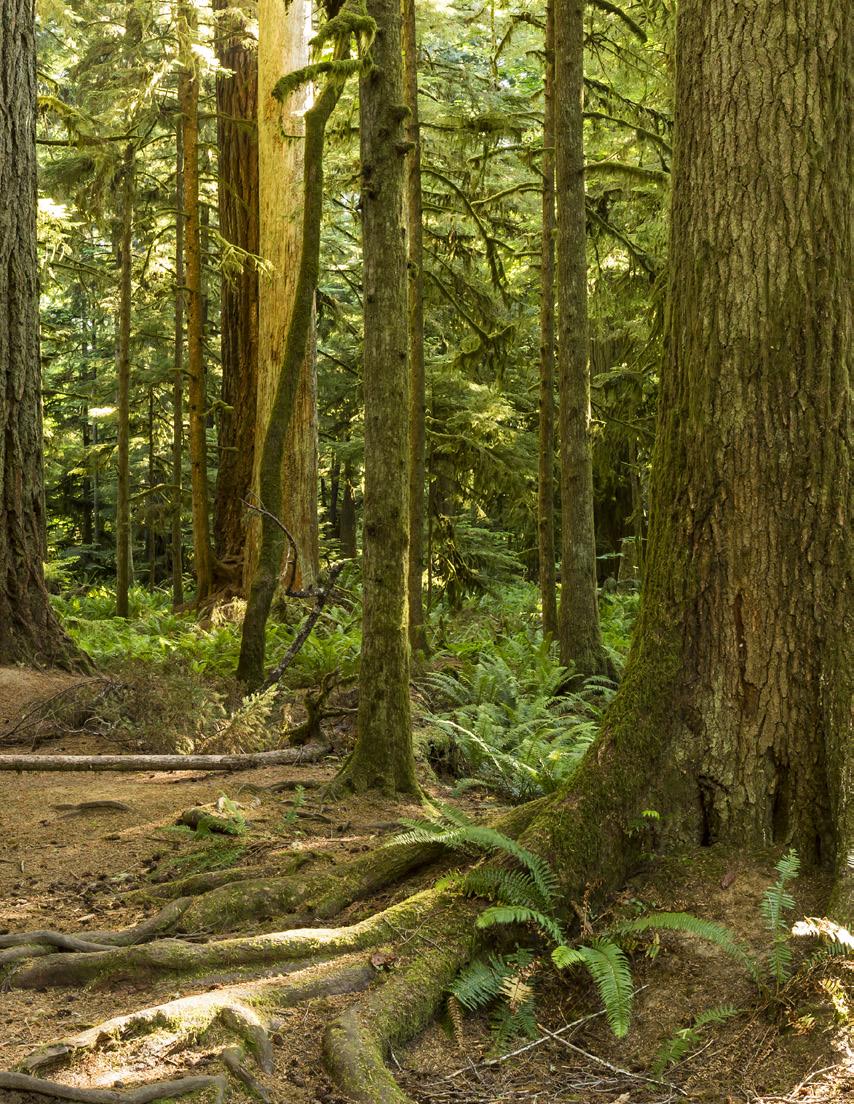
4 minute read
Managing complexity with systems models
Looking at the bigger picture through a systems modelling lens offers data-driven paths forward to achieve forest operations and management goals

Advertisement
As forest management becomes increasingly data-driven, modelling is an approach that more researchers, government representatives and forestry professionals are using to sift through reams of information to develop recommendations, processes and regulations. The research of UBC Forestry Asst. Prof. Gregory Paradis often involves high-tech, number crunching software that identifies patterns and creates projections designed to guide forest management policies and best practices.
In his 2020 paper published in Environmental Reviews, Gregory and co-authors proposed the development of decision support systems (DSSs) to help decision-makers mitigate invasive species in forests. Forestry issues and factors have become increasingly complex with the advent of novel technological innovations and changing needs and values. As a result, the paper argued, tools such as DSS may well increase in importance and prevalence.
“Forest management planning and the forest sector have often focused on the forest itself; however, the goals of sustainable forest management require analysis of what’s happening in the forest and what’s happening with the timber that is extracted from the forest at the same time.”
A key advantage of modelling tools such as DSS is that they are able to draw from and condense high volumes of statistical data. From the start of the global pandemic, many Canadians quickly became accustomed to hearing about COVID-19 models and how they were being consulted by public health officials to set policies and regulations. The same principles apply to modelling in forestry.
Designing accurate models requires gathering as much information as possible and considering weaknesses or uncertainties that could compromise results.
TheWesternBorealInitiativeprojectusesbioinformaticsopen-sourcesoftware andasystemsmodellingapproachtoimplementcomplexsimulationsofthecumulativeeffectsofnaturalandanthropogenicdisturbancesunderclimatechangein WesternCanada.GregoryParadisdevelopedtheHarvestmodule,alongwiththe open-sourceforestestatemodellingsoftwarelibrarycalledws3,whichcanbe usedtobuildandrunwoodsupplysimulationmodels.
From Gregory’s perspective, a key challenge when developing sustainability impact models for BC’s forest sector is how to ensure that they are robust. What factors should be identified and fed into each model? What could be missing?
For example, Gregory describes how maximizing carbon sequestration by way of effective supply chain decisionmaking requires the simultaneous modelling of forest management procedures and standards within forest ecosystem services management and forest products supply chain management. However, at present, government-run forest ecosystem planning and industry forest products fibre procurement planning operate largely in isolation.


This, Gregory points out, “is possibly leaving some sustainability enhancements on the table.”
Mapping the big picture
Systems modeling in agriculture began around the 1950s as a way to optimize farm decisions and evaluate the economic benefits of policies on rural development, according to the article, “Brief history of agricultural systems modeling,” published in the journal Agricultural Systems. This, the authors note, led to additional economic, ecological and biological modelling of farming systems, such as grasslands used for grazing cattle. One of the draws of the approach was its ability “to study the complex behaviour of ecosystems as affected by a range of environmental drivers.”
Applications of systems modelling in forestry followed suit.

In 1972, the Systems Analysis Working Group of the Society of American Foresters was formed to promote the development of operations research models designed to help solve many of the challenges facing forestry and the forest industry.
According to “Brief history of systems analysis in forest resources,” discussions at the first Systems Analysis and Forest Resource Management Workshop, held in 1975, surrounded “multiple-use and land-use planning, timber management, timber harvesting & transportation, forest fire and data management.”
Much has changed in forestry operations and management since the 1970s, but systems modelling continues to be used to forecast the potential outcomes of hypothetical scenarios. It can also aid in accounting for multiple and sometimes disparate interests and goals, says Gregory.
A systems approach
“Forests are systems, supply chains are systems, governments are systems under policy frameworks, societies are systems in terms of communities that interact and do things based on inputs and outputs,” Gregory explains. “They behave according to certain rules that can lend themselves to predictions.”
When running yield optimization simulations, Gregory and his team often integrate game theory to help anticipate the behaviour of agents, such as branches of government or industrial licensees.
Because each agent must follow certain rules, Gregory can “use knowledge of these processes to guess which way the frog’s going to jump, e.g., what would happen if we add a new pellet mill to this existing supply chain and have it co-funded by government and industry, and have them turn a profit?”
If one approach shows positive economic, social and environmental returns, agents may opt for that approach over the status quo, Gregory says. Models of positive outcomes derived through joint ventures can argue that case, too.
“Achieving such things as carbon reduction targets may require managing the whole system with a more central or top-down approach that combines agents and puts them in the same room to get them to build their plans together simultaneously.”
“A big part of the strategic outlook of my lab – the Forest Resources and Environmental Services Hub (FRESH) – for the next few years is: ‘What would be the potential outcome if we join together forest ecosystem and forest sector supply chain management both in BC and across Canada?’” asks Gregory.
“How might a new, collaborative approach potentially improve the environmental and commercial sustainability of forest activities?”
Initially launched in 2013 by former UBC Forestry Assoc. Prof. Verena Griess, FRESH investigates ecological, economic and social aspects of sustainable forest and natural resources management in collaboration with academics within UBC Forestry’s Integrated Remote Sensing Studio. The FRESH research team leverages knowledge from management studies, silviculture, operations research and risk assessment theories to optimize processes and build sustainable forest management plans.


“With the urgency of the climate crisis, now is a really good time to use tools such as systems modelling to estimate the potential added value of collaborative innovations in BC and to start realizing the benefits as soon as possible.”
Learn more about Gregory’s work and the FRESH lab: fresh.forestry.ubc.ca










